 Blackbird A common bird of the garden, always running around looking for worms or grubs. |
|
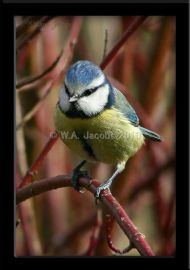 Blue Tit A familiar garden resident in most of mainland Britain and Ireland, often coming to bird feeders in winter months. Has elements of blue, green and yellow in its plumage with striking dark markings on head. |
|
 Common Buzzard A common bird in Southern Endland, feeds mainly of carrion. |
|
 Coal Tit One of our smallest resident birds. Widespread and fairly common throughout most of mainland Britain and Ireland. Black and white markings on head with conspicuous white patch on its nape. Found in coniferous and deciduous woodland and will visit garden bird feeders in winter. |
|
 Common Gull Despite it's name its not that common. Breeds mainly in Scotland and N Ireland. |
|
 Goldfinch One of our most colourful finches. Common and widespread resident in Britain and Ireland except N Scotland. Favours waste ground and meadows where its narrow pointed bill is used to pry the seeds from thistle and teasels. Collective name a "charm of goldfinches" |
|
 Great Spotted Woodpecker. Thjis is one of the local woodpeckers on the nut feeder in the garden. |
|
 Female House Sparrow A not so common bird in Britain, in the past they seemed to be everywhere. The have declined in recent years, the cause is still not known. |
|
 Jackdaw A member of the crow family, at my home they seem to go around in little groups, creating mayhem and noise around them. Easily identified by their Silver hoods. |
|
 Juvenille Black headed Gull Taken at a local park this young bird was quite happily taking bread and other titbits from the visitors |
|
 Long-tailed Tit These charming birds often charge around in groups of 6-10 eating quickly and then moving to the next item of food. They are not members of the Tit family. |
|
 Male Caffinch A bird that is becoming more common in our gardens, and parks. Will become quite tame and approach for food in the parks. |
|
 Meadow Pipit A bird not so easy to identify, the long claw on the back of the leg gives it away. |
|
 Mistle Thrush Larger than the Song Thrush and not so common. Found in the countryside. |
|
 Mute Swan A familiar bird of lakes, rivers and canals. The male (cob) is identified by the large bulge above the beak end. The female (penn) is generally more aggressive when she has young (cygnets) |
|
 Red Kite A much maligned bird by gamekeepers. They are starting to recover in certain pars of the UK, in others they are still being poisoned. Recognised by it rust coloured plumage and forked tail |
|
 Reed Warbler Quite an elusive bird to see until it starts to sing when it will sit higher up the reeds. |
|
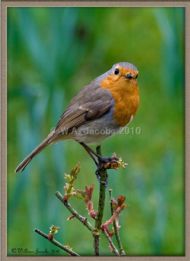 Robin Perhaps the most photographed bird. found in most gardens, where it will become quite tame and feed from the hand with patience |
|
 Greenfinches A Bird which is becoming more common in the garden in the rural areas. |
|
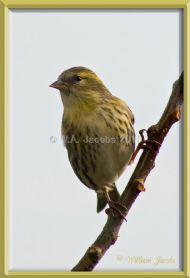 Siskin A winter visitor to the south, normally found with goldfinches. |
|
 Spotted Flycatcher Another summer visitor, normally sits on the same spot flying out to catch a fly and returning.. |
|
 Starling mother and chick A common bird, sometimes disliked because of thier greed. |
|
 Stock Dove Sometimes mistaken for a pigeon. |
|
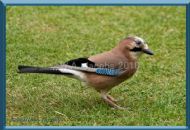 The Jay A timid bird, accused of egg and chick stealing. Likes acorns and will store them for the winter and remember where he put some of them. |
|
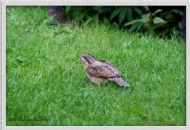 Wryneck A rarity in the south, a summer visitor found in woodland.A member of the woodpeckers, likes to feed on ants |
|
 Yellow-hammer One of the UK brightest coloured bird, seen high in hedgerows. Normally in groups. |
|
| |